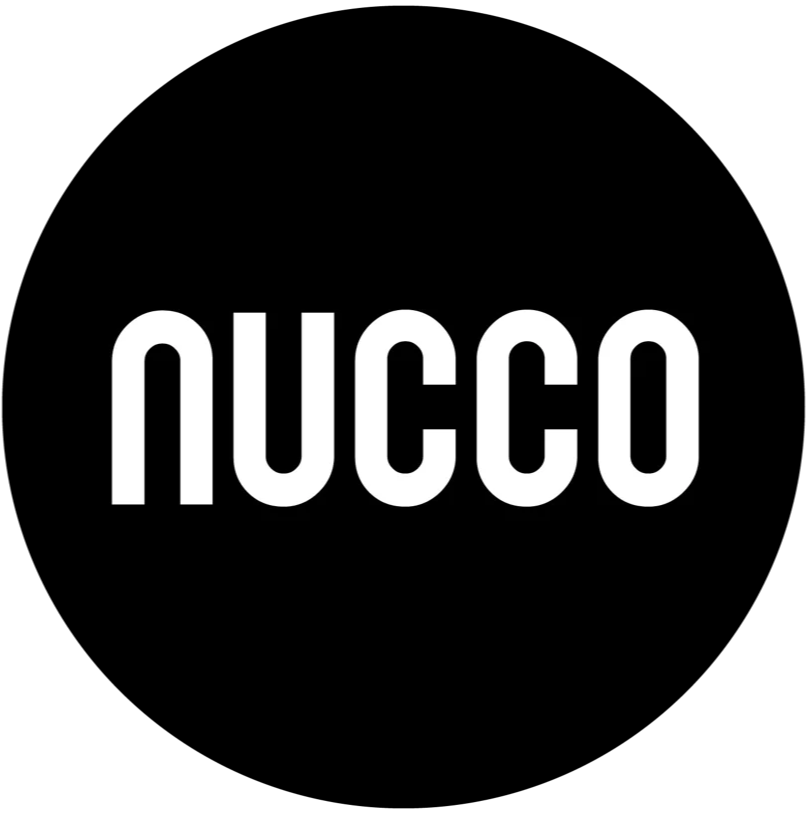THINKING OUTSIDE THE BOX: CREATIVITY WITHIN CORPORATE COMPLIANCE

Expert insights from the compliance and marketing sectors.
Picture this: you’ve come up with the perfect campaign for your corporate client. It’s daring, it’s different to what’s been done before, and you’re sure the target audience is going to love it. You meet with your client to walk them through it – and compliance squashes the idea. “We’re not allowed to say that”, or “we need 6 lines of T&Cs on that ad”, they say.
It’s true: compliance has killed countless genius creative ideas. But for marketers in large organisations – particularly within regulated fields like legal, finance and pharmaceuticals – compliance is a necessary evil. And approached in the right way, working within the restrictions of compliance can paradoxically birth the most innovative and brilliant campaigns.
At our latest event on June 24, we were joined by Claire Templeton, Media and Entertainment Underwriter at Beazley Insurance, Caroline Flanagan, Senior Legal Project Manager at Clifford Chance LLP, Francesca Keefe, Senior Marketing Manager at Natwest, and Alistair Robertson, Head of Creative Strategy at Nucco to discuss how to ensure corporate compliance and creativity can work together for the best ROI.
 Thinking Outside The Box: Creativity Within Corporate Compliance
Thinking Outside The Box: Creativity Within Corporate Compliance
Our panel of experts shared their thoughts on pushing the boundaries of creativity, while staying within the limits of compliance, how marketers can work with compliance teams to bring ideas to life, and how adding a splash of creativity to your marketing can set you apart from your competitors. Here, we round up their best advice and most insightful comments on the topic.
Creativity gives you a competitive advantage
Whichever industry you’re in, creative campaigns are a great way to get your brand out there and in the minds of consumers. You don’t typically see adverts for law firms plastered on London buses, so companies need to find innovative ways to help people understand what they do, and what sets them apart from their competitors. “How do you get the best graduates if they’re not aware of your brand?” asks Caroline Flanagan of Clifford Chance LLP. “It’s those really savvy ways of creating a brand without the traditional advertisement that will differentiate people,” she says. That’s where creativity comes in.
“Creativity should really drive differentiation and therefore cut through,” says Francesca Keefe, of NatWest. “In turn, that will increase your brand awareness: if you’ve got a campaign that really is driving cut through in a space, your brand is going to be everywhere.”
We’re bombarded with advertisements all day every day, whether that’s on the street, as we flick through a magazine, or as we scroll through social media. It’s hard enough for even the most cutting-edge, hip brands to cut through the noise, let alone companies in fields that don’t naturally grab our attention. After all, “Nobody wants to talk about or buy insurance – it’s the boring part!” admits Claire Templeton, of Beazley Insurance.
With the rise of disrupters hell-bent on making traditionally dull industries cool – Monzo in banking, and Stripe in online payments, for example – it’s more important than ever for companies to harness the power of creativity to stay relevant and gain a competitive advantage.
“NatWest are very aware of the fact that if we don’t test new things and try to do things a bit differently, we’ll get left behind,” says Keefe. To combat this, they’re focusing on bringing originality to their campaigns. “Traditional banking can be quite corporate, so for one of our ventures we tried something different. We tried to talk to our customers in a very down to earth, human way, and also create a really distinctive brand presence to cut through what is a very blue space.”
It’s not all about external comms, either. Creativity can help motivate employees to abide by compliance rules internally, too. “Sometimes when people don’t know why you’re asking them to do something in a certain way, you get that ‘why’ question,” says Flanagan. “Instead of just saying you have to do A, B and C, if you can paint a story to say ‘we’re going to do A, B, and C because’, people are far less likely to say they don’t want to do it.”
When creativity and compliance clash
Coming up with creative campaigns that also comply with regulations presents unique challenges. “In agencies we’re conditioned to create work that pushes boundaries, and maybe makes clients feel a little uncomfortable at first. But to make a marketing manager feel uncomfortable versus an insurance manager is an entirely different thing!” says Nucco’s Alistair Robertson.
Unlike in other industries where with enough convincing, marketing managers might eventually come on board with an agency’s out-there idea, with compliance there’s far less give and take. “Compliance can kill an idea,” explains Robertson, “but there’s nothing wrong with that. If it kills an idea because that’s the wrong thing to say, that’s the compliance team’s job – stopping the company getting sued!”
The rules that compliance teams must follow are clear, but there’s an element of subjectivity from which disagreements can arise. “If it’s factual, things can be backed up by data and the fine print, but where you need to be careful is when you’re making insinuations,” says Flanagan. “What our marketing team wants to say versus what our compliance teams want us to say can at times be very, very different,” agrees Keefe.
A creative and a compliance officer are coming from opposing perspectives – the former pushes the boundaries, and the latter focuses on staying within them. “We’ve had pushback from compliance on social media, saying ‘even though it’s a 15 second video, what we’d like you to do at the end is present the equivalent of 15s worth of T&Cs’,” says Keefe. “But obviously that’s not really how social media works!”
But as Robertson points out, sometimes the restrictions can be a good thing. “The challenges that very heavily compliant areas provide are the ones that deliver the best creative opportunities – the ones that make you think more than anything,” he says.
Given compliance is a non-negotiable, how should marketing teams ensure they’re meeting legal requirements without having their creativity stifled? It all comes down to good communication.
Communicate from the get-go
“When it comes to creating campaigns, it’s key to bring compliance in early to get them on board as part of the journey,” says Keefe. It’s not a good idea to just loop them in at the end as an afterthought. “If you do that, 9 times out of 10, you’re going to have to start again because there’s lots of things you haven’t considered.”
Instead, focus on taking a collaborative approach. To a certain extent, this comes down to culture. In the US, known for its culture of suing, “there’s a lot more day-to-day involvement for high-level projects,” explains Templeton. “In the UK it’s less formalised – it gets ticked off towards the end.” But with compliant-heavy industries, the key to a successful project and smooth working relationship is frequent communication.
NatWest takes a particularly collaborative approach when launching a project that pushes the boundaries. “We have what’s called an advice session where we take them through what we intend to do and get their initial views, just so we can understand if this is something we can do,” explains Keefe. It’s the perfect solution, because creatives have the chance to test the waters before becoming married to an idea that just isn’t feasible. Creatives don’t have a full understanding of regulations, so check-in meetings provide the chance to make sure the teams are aligned on all sides.
The need to work together across teams is a recurring theme. Templeton stresses the importance of striking a balance between what’s required by law, and what’s needed on the artistic front to achieve a campaign’s objectives. Coming from the insurance industry, she discusses the need to stick to the factual elements. “We need to revert to the legal teams, but we also don’t want to stop creativity,” she says. “We want really great communication so that everyone’s driving forward together.”
“When we link arms and and work together, that’s when we all benefit,” says Robertson. There’s sometimes a tendency for marketing teams to run and hide at the mention of the word compliance, but ultimately, they’re doing the very important job of protecting the company they’re hired by. “Acceptance and understanding of each other is vital for a successful campaign.”
Getting stakeholders on board
If you’re experiencing pushback from compliance on your campaign idea, having a champion within the legal team can be make-or-break. Beyond complying with the necessary regulations, compliance teams might be reluctant to okay an idea because it’s so far removed from what they’re used to.
Keefe’s social media example from earlier is the perfect illustration. The team had an idea for a 15 second social media video, but compliance wanted 15 seconds worth of T&Cs in the video as well. “This is where having champions comes into play,” explains Templeton. “If you’ve had someone who’s worked with you on a previous campaign, they understand the differences, and you don’t have to explain everything all over again.”
These champions can be the connectors between adventurous marketing teams and cautious stakeholders, helping to strike a happy medium that suits everyone. “When you build champions in those teams, they become the go-to people to facilitate your ideas,” explains Flanagan. “You’ve got a sounding board.”
Robertson suggests forging one-to-one relationships with members of key teams. Getting stakeholders on board is all about coming from a place of understanding. If you’re still getting pushback, Keefe recommends ensuring the goals of the campaign are clear. What might be obvious to a marketer might not be to a legal officer, and when you’re coming from different perspectives, it’s more important than ever to encourage mutual understanding. “Once compliance teams are aware of the objectives, you can work closely and align to deliver the best output,” explains Keefe.
The potential of digital
When it comes to digital, traditionally regulated industries may be a couple of steps behind, but it presents exciting new opportunities for companies to explore.
The global pandemic has given rise to a new work-from-home culture, even in industries like banking and law, where additional safeguarding regulations are required. We’re having to take webinars, and we’ve all got emergency Lloyds protocols in place so that we can place our business digitally,” says Templeton of the world of insurance. Digital is the way forward, no matter which industry you’re in, so it’s worth examining the possibilities for your business.
“Digital is where our customers are,” says Keefe. “That’s what people are using, so it has to be seen as an opportunity.”
There are inherent challenges, like ensuring T&Cs are sufficiently covered, even in social media videos or banner ads where space is very limited. But that doesn’t mean it’s impossible – and as Robertson points out, sometimes the most creative ideas come from heavy restrictions.
Digital is shaping the future of marketing. “It has the ability to micro-target audiences and to be there at the time of need,” explains Robertson, providing ample opportunity for companies to communicate with their customers on a deeper level. “Looking at the future, particularly with things like augmented reality, hopefully marketing will become a lot more intelligent,” says Keefe. “We won’t need to target people that we think are in the market, for say a business loan, but we’ll know that a person is at the point of need of a business loan. It will become much more personalised.”
While heavily-regulated industries will always come with challenges for marketers, the potential is exciting. “The difficulty of marketing something can be the springboard into genuinely brilliant work that blows away the competition and wins awards,” says Robertson.
Want to learn more? You can check out our event video here.
Looking for a new creative partner for your projects? Talk to our experts today.


